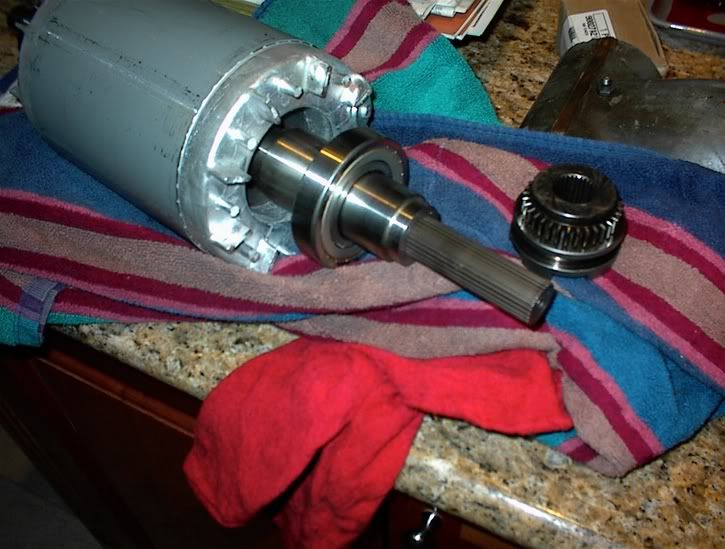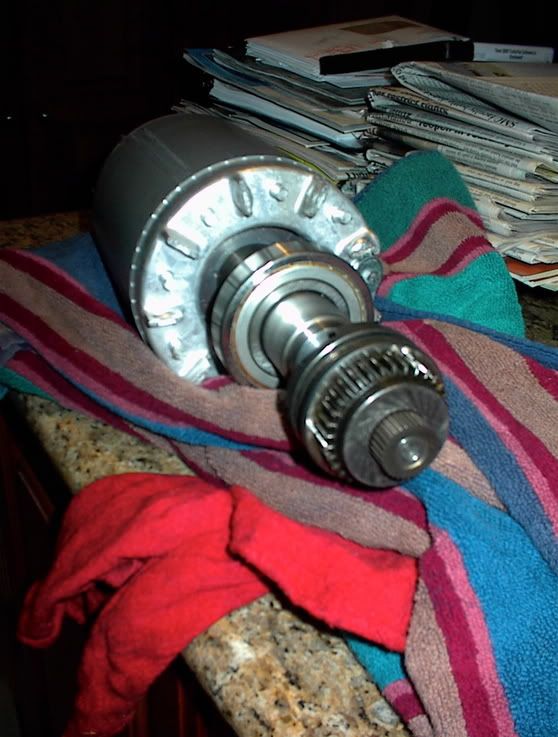Tipsy
Aluminum
- Joined
- Nov 15, 2005
- Location
- Topanga CA
Thanks to some pictures of previous posts, I was able to adapt a new 10hp inverter ac motor with and SJ200 VFD, to the original back gear. Amazeingly it works! I will next try to post a few pictures and descriptions.
Below is the new motor shaft with a new spine added. I cut down the shaft to 0.5 inches, made a molly ring and used an EDM to cut the splines. The shaft was frozen, spline heated and pressed togeather really quickly--it will never come apart again.

Below is the new motor shaft with a new spine added. I cut down the shaft to 0.5 inches, made a molly ring and used an EDM to cut the splines. The shaft was frozen, spline heated and pressed togeather really quickly--it will never come apart again.






 adaptations.
adaptations.
